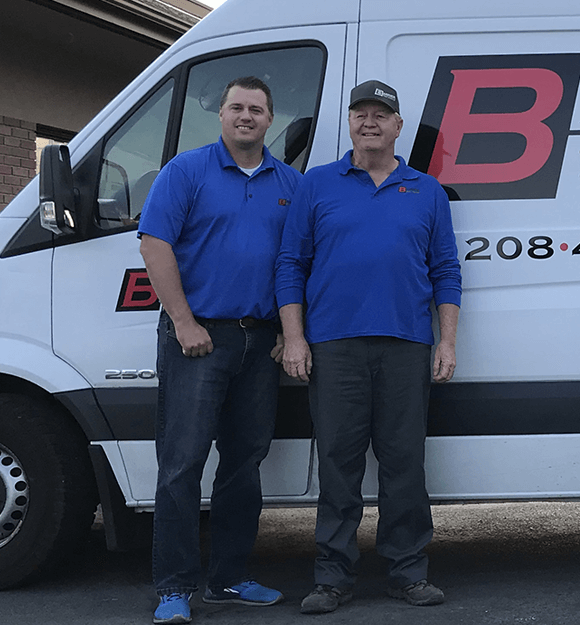People often ask us the question: Why do spiders and insects come into my house? The answer is a frustrating ‘it depends.’ One of the main reasons, though, depends on temperature.
As I write this, it is 99° outside. While coming back to the office for lunch, all I could think of was the air conditioning in my office, and how I hoped I left it on in my absence so it would be cool when I got back. Spiders and Insects are much the same.
When I got back (thankfully the AC WAS still on!) I got a text with pictures of Elm Seed Bugs on a house trying to escape the summer heat….and thus, a blog post was born.
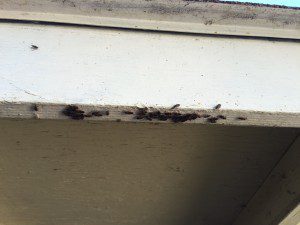
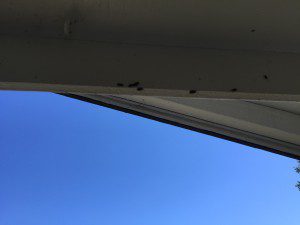
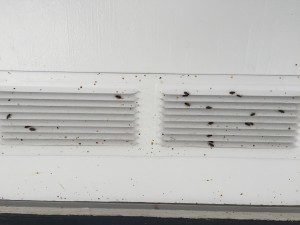
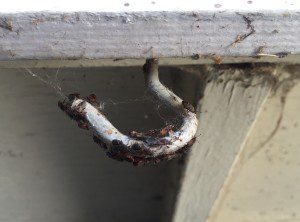
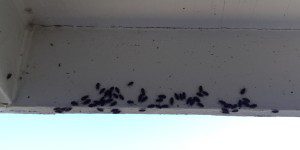
Spiders and Insects are Poikilotherms, meaning their internal temperatures can vary a great deal. Poikilotherms are often termed ‘cold blooded’ animals, and understandably so, because poikilotherms is really hard say. Poikilotherms are the opposite of ‘warm blooded’ animals (called homeotherms). Homeotherms maintain a constant internal temperature.
Furthermore, spiders and insects are Ectotherms, meaning they gain (or lose) heat according to the environment. Endotherms are the opposite, as they regulate their own internal temperatures.
So why all this _____therm mumbo-jumbo? 2 reasons:
1. Scientists have discovered that most spiders and insects have an ‘optimal temperature,’ or ‘thermal optimum’ in which populations grow most rapidly. For example, in a study in 2006 (https://faculty.washington.edu/hueyrb/pdfs/hotter_is_better.pdf) found that up to a certain high temperature, insect population growth rate was higher with higher temperatures. For example, they found that the optimal temperature for an aphid was 76.5°F. Hotter is better indeed. At least for bugs. As spring arrives and temperatures rise, spiders and insects come close to their temperature optimums. As they near their optimums, populations grow larger and larger. The relationship between environmental temperatures and spider and insect populations are undeniable. Here is a chart indicating average daily temperatures in the Boise area by month (average temperature information gathered from https://www.usclimatedata.com/climate/boise/idaho/united-states/usid0025)
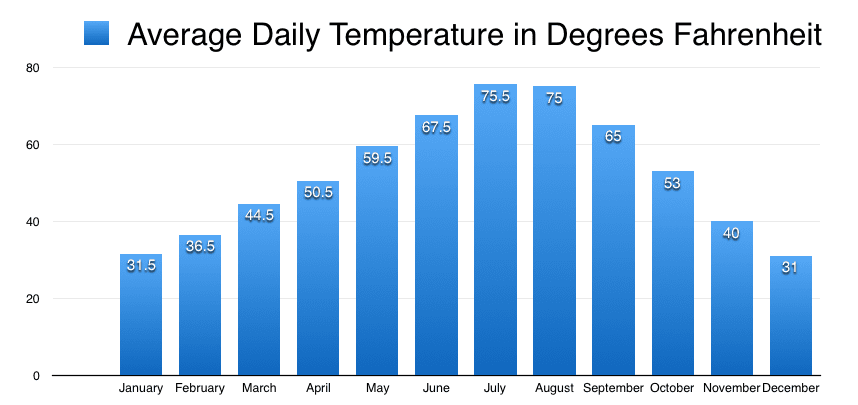
As the the chart suggests, average daily temperatures in the Boise area are highest in June and July. Through our observations over the years, that is when spider and insect populations skyrocket.
2. Scientists also observe that spiders and insects have a temperature in which their growth rate slows down, they cease to thrive, and can even die. These temperatures vary depending on what insect or spider you’re dealing with, but as one article states about spider mites and Spider Mite Lady beetles (https://www.esf.edu/efb/parry/Insect%20Ecology%20Reading/Roy_etal_2002.pdf), the low temperature threshold is around 59°F as a low, and 95°F as a high. Meaning that for the insect, below 59°F is bad, and above 95°F is bad.
Remember that since spiders and insects are ectothermic, or they gather heat from the environment, they will mirror whatever environmental temperature they find themselves in. The farther they get away from their ‘optimal temperature,’ spiders and insects will do what they can to regulate their temperature, which means coming indoors to enjoy warmer or cooler temperatures, depending on the time of the year. That it why we believe that summer heat or winter cold drive pests indoors.
As spider and insect populations rise, and as the heat or the cool drive them indoors, you have the potential for a perfect storm-high populations with a desire for climate controlled environments.
This time of year, Elm Seed Bugs and other spiders and insects are coming inside in huge numbers. We can help! Our team is trained to keep you in control of who comes and goes into your house (at least with spiders, insects, and rodents)!
